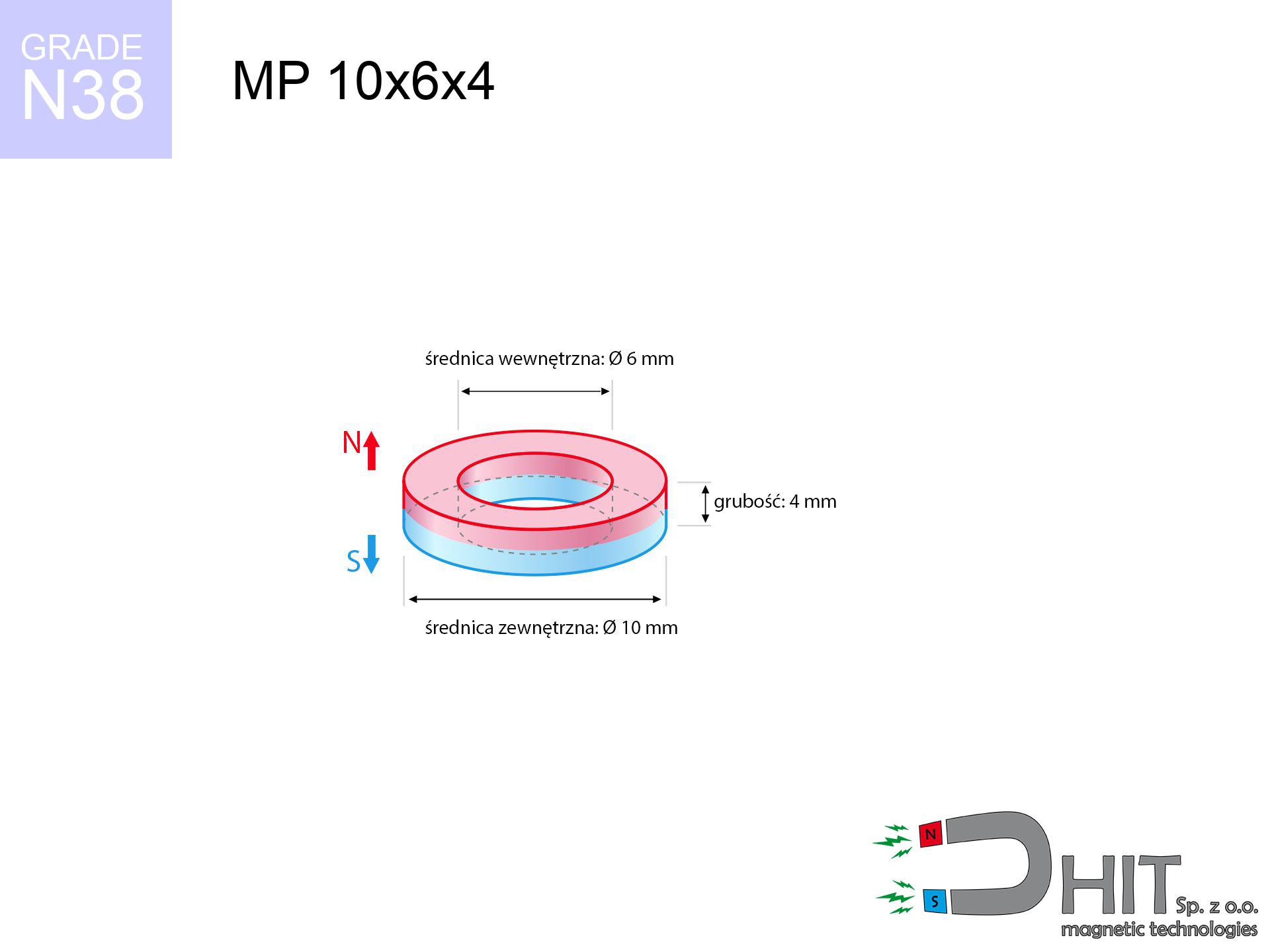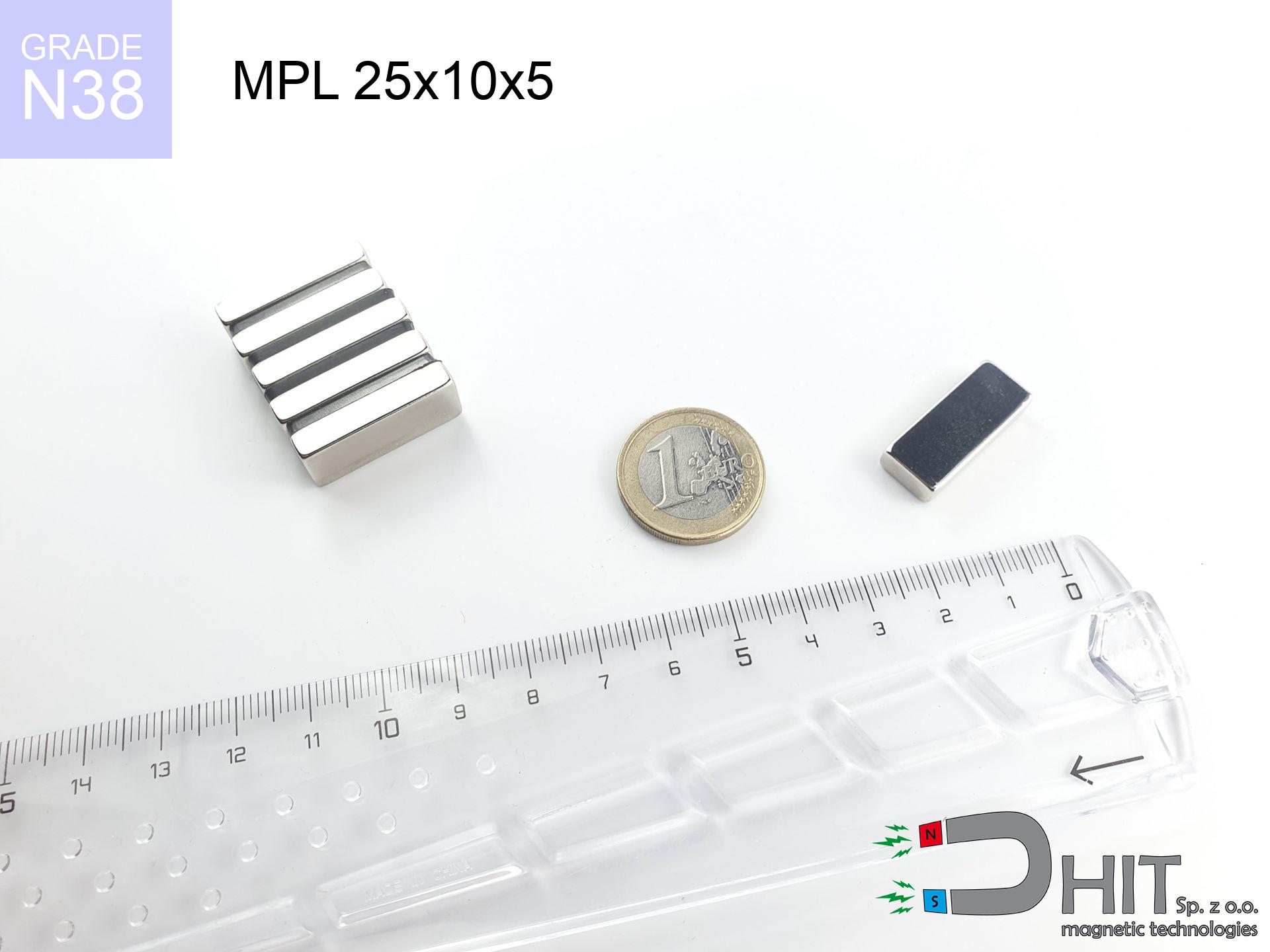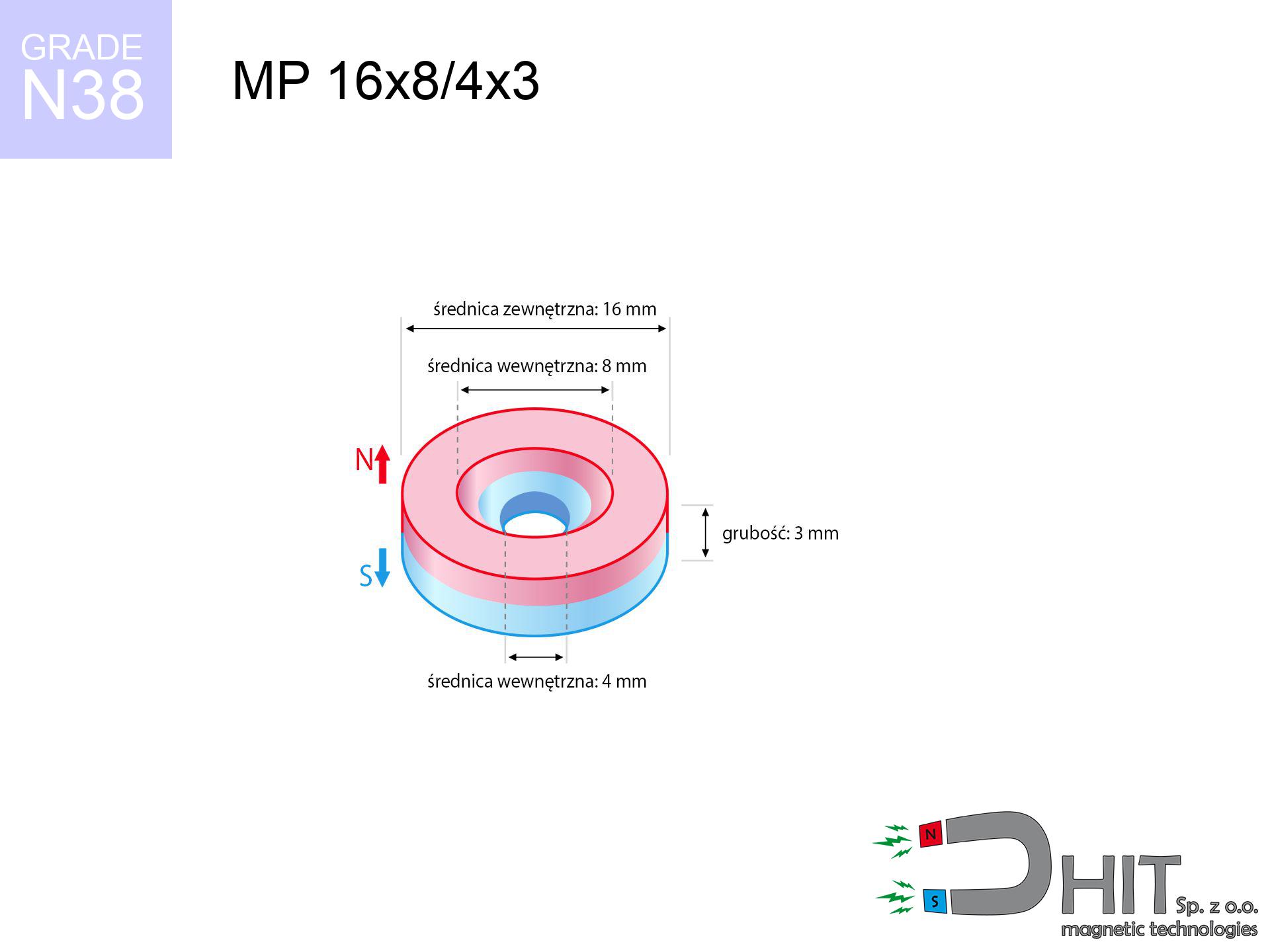MP 10x6x4 / N38 - ring magnet
ring magnet
Catalog no 030179
GTIN: 5906301811961
Diameter [±0,1 mm]
10 mm
internal diameter Ø [±0,1 mm]
6 mm
Height [±0,1 mm]
4 mm
Weight
3.77 g
Magnetization Direction
↑ axial
Load capacity
1.37 kg / 13.44 N
Magnetic Induction
108.09 mT
Coating
[NiCuNi] nickel
0.898 ZŁ with VAT / pcs + price for transport
0.730 ZŁ net + 23% VAT / pcs
bulk discounts:
Need more?Need advice?
Call us now
+48 888 99 98 98
alternatively contact us by means of
form
our website.
Strength as well as appearance of a neodymium magnet can be tested using our
online calculation tool.
Same-day shipping for orders placed before 14:00.
MP 10x6x4 / N38 - ring magnet
Magnetic properties of material N38
Physical properties of NdFeB
Shopping tips
Advantages and disadvantages of neodymium magnets NdFeB.
In addition to their long-term stability, neodymium magnets provide the following advantages:
- Their power is maintained, and after around ten years, it drops only by ~1% (theoretically),
- Their ability to resist magnetic interference from external fields is among the best,
- The use of a mirror-like nickel surface provides a eye-catching finish,
- They exhibit extremely high levels of magnetic induction near the outer area of the magnet,
- Neodymium magnets are known for exceptionally strong magnetic induction and the ability to work at temperatures up to 230°C or higher (depending on the geometry),
- Thanks to the freedom in shaping and the capability to adapt to individual requirements, neodymium magnets can be created in diverse shapes and sizes, which increases their usage potential,
- Significant impact in modern technologies – they find application in computer drives, rotating machines, clinical machines along with technologically developed systems,
- Thanks to their concentrated strength, small magnets offer high magnetic performance, while occupying minimal space,
Disadvantages of magnetic elements:
- They can break when subjected to a heavy impact. If the magnets are exposed to shocks, it is suggested to place them in a metal holder. The steel housing, in the form of a holder, protects the magnet from breakage while also strengthens its overall robustness,
- High temperatures may significantly reduce the holding force of neodymium magnets. Typically, above 80°C, they experience permanent loss in performance (depending on size). To prevent this, we offer heat-resistant magnets marked [AH], capable of working up to 230°C, which makes them perfect for high-temperature use,
- Magnets exposed to moisture can degrade. Therefore, for outdoor applications, it's best to use waterproof types made of rubber,
- Limited ability to create threads in the magnet – the use of a magnetic holder is recommended,
- Potential hazard related to magnet particles may arise, if ingested accidentally, which is significant in the context of child safety. Furthermore, tiny components from these devices have the potential to complicate medical imaging if inside the body,
- In cases of tight budgets, neodymium magnet cost is a challenge,
Maximum holding power of the magnet – what contributes to it?
The given strength of the magnet represents the optimal strength, assessed in ideal conditions, that is:
- with mild steel, used as a magnetic flux conductor
- having a thickness of no less than 10 millimeters
- with a refined outer layer
- in conditions of no clearance
- with vertical force applied
- at room temperature
Lifting capacity in real conditions – factors
The lifting capacity of a magnet is influenced by in practice the following factors, ordered from most important to least significant:
- Air gap between the magnet and the plate, as even a very small distance (e.g. 0.5 mm) can cause a drop in lifting force of up to 50%.
- Direction of applied force, because the maximum lifting capacity is achieved under perpendicular application. The force required to slide the magnet along the plate is usually several times lower.
- Thickness of the plate, as a plate that is too thin causes part of the magnetic flux not to be used and to remain wasted in the air.
- Material of the plate, because higher carbon content lowers holding force, while higher iron content increases it. The best choice is steel with high magnetic permeability and high saturation induction.
- Surface of the plate, because the more smooth and polished it is, the better the contact and consequently the greater the magnetic saturation.
- Operating temperature, since all permanent magnets have a negative temperature coefficient. This means that at high temperatures they are weaker, while at sub-zero temperatures they become slightly stronger.
* Holding force was measured on the plate surface of 20 mm thickness, when a perpendicular force was applied, whereas under shearing force the load capacity is reduced by as much as fivefold. Moreover, even a slight gap {between} the magnet’s surface and the plate lowers the load capacity.
Notes with Neodymium Magnets
Neodymium magnets are among the most powerful magnets on Earth. The surprising force they generate between each other can shock you.
Make sure to review all the information we have provided. This will help you avoid harm to your body and damage to the magnets.
Neodymium Magnets can attract to each other, pinch the skin, and cause significant injuries.
Magnets attract each other within a distance of several to about 10 cm from each other. Don't put your fingers in the path of magnet attraction, because a significant injury may occur. Depending on how massive the neodymium magnets are, they can lead to a cut or a fracture.
Magnets should not be treated as toys. Therefore, it is not recommended for youngest children to have access to them.
Remember that neodymium magnets are not toys. Be cautious and make sure no child plays with them. In the case of swallowing multiple magnets simultaneously, they can attract to each other through the intestinal walls. In the worst case scenario, this can lead to death.
Neodymium magnets can become demagnetized at high temperatures.
Under specific conditions, Neodymium magnets may experience demagnetization when subjected to high temperatures.
Keep neodymium magnets away from the wallet, computer, and TV.
The strong magnetic field generated by neodymium magnets can damage magnetic media such as floppy disks, video tapes, HDDs, credit cards, magnetic ID cards, cassette tapes, or other devices. They can also damage videos, televisions, CRT computer monitors. Do not forget to keep neodymium magnets away from these electronic devices.
Keep neodymium magnets as far away as possible from GPS and smartphones.
Magnetic fields can interfere with compasses and magnetometers used in aviation and maritime navigation, as well as internal compasses of smartphones and GPS devices. There are neodymium magnets in every smartphone, for example, in the microphone and speakers.
Dust and powder from neodymium magnets are highly flammable.
Do not attempt to drill into neodymium magnets. Mechanical processing is also not recommended. If the magnet is crushed into fine powder or dust, it becomes highly flammable.
Neodymium magnets should not be near people with pacemakers.
In the case of neodymium magnets, there is a strong magnetic field. As a result, it interferes with the operation of a heart pacemaker. Even if the magnetic field does not affect the device, it can damage its components or deactivate the entire device.
The magnet coating is made of nickel, so be cautious if you have an allergy.
Studies clearly indicate a small percentage of people who suffer from metal allergies such as nickel. An allergic reaction often manifests as skin redness and rash. If you have a nickel allergy, you can try wearing gloves or simply avoid direct contact with nickel-plated neodymium magnets.
Neodymium magnets are especially delicate, which leads to shattering.
Magnets made of neodymium are delicate as well as will break if allowed to collide with each other, even from a distance of a few centimeters. They are coated with a shiny nickel plating similar to steel, but they are not as hard. At the moment of connection between the magnets, small sharp metal fragments can be propelled in various directions at high speed. Eye protection is recommended.
Be careful!
To illustrate why neodymium magnets are so dangerous, read the article - How dangerous are very strong neodymium magnets?.







![SM 32x325 [2xM8] / N42 - magnetic separator SM 32x325 [2xM8] / N42 - magnetic separator](https://cdn3.dhit.pl/graphics/products/sm-32x325-2xm8-fog.jpg)

